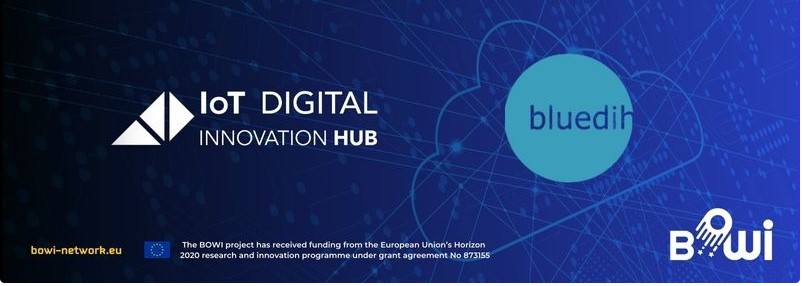We interviewed Nikola Bejo from Bluedih (Croatia) & Ricardo S. Alonso Rincón from IOT Digital Innovation Hub (Spain) on their experience with DIHNET methodology on corridor-building. Operational since 2020 and organized around contact points and competence centers which include higher education institutions such as universities and polytechnics, Bluedih is providing services to SMEs and public sector to facilitate digital transformation processes. The objective of the IoT Digital Innovation Hub and the innovation-driven organizations involved is to help companies (especially SMEs) become more competitive through the adoption of Internet of Things technologies in their business/production processes, products and services.
What’s your experience with the project so far? What was the impact of DIHNET on your organisation?
Our experience with DIHNET has been extremely positive. Not only have we gained valuable insights into market needs and pains through collaboration with companies and experimentation with different technologies, but we have also been able to connect with a large network of European DIHs, which has opened doors for future collaborations. The direct intervention in the work of other DIH companies and organizations, the advanced knowledge and teamwork in new technologies, and the progress in applying existing ones have all made a significant impact on our organizations. The approach of DIHNET to working with other organizations has been instrumental in driving positive outcomes for our teams.
What was the most challenging throughout the process of supporting the experiments? How did you overcome it?
Throughout the process of supporting the technological experiments, there were several challenges that we encountered. One of the most significant challenges was ensuring effective communication and coordination among the different organizations involved in the project. Coordinating timelines, resources, and expectations across multiple stakeholders required careful planning and coordination to ensure smooth execution of the experiments. Additionally, challenge of involvement for mature hub was twofold. On the one hand, the distance was overcome by visiting their facilities and establishing sufficient contacts. On the other hand, time was a challenge; specifically, matching the specific needs was a challenge which we are now trying to overcome by making more time available to finish correctly. Despite these challenges, through effective communication, technical expertise and collaboration we were able to navigate through the process of supporting the technological experiments and achieve positive outcomes.
What about the process of corridor building? What did you learn, what were your highlights?
One of the key learnings from the corridor-building process was the importance of building and maintaining strong partnerships based on trust, and shared objectives. Collaborating with other DIHs and organizations with different backgrounds, expertise, and perspectives required effective communication and alignment of interests. Building such partnerships helped us leverage collective strengths and resources, resulting in a more robust and impactful experimentation process. Here we would highlight the provision of full cooperation fields by FundingBox. Some of them, such as governance or the setting of clear KPIs, are very relevant and need to be sufficiently deepened. This, in essence, would be the learning process, i.e. the complete process overview to provide for a successful future collaboration.
What are your plans for the future? What collaboration activities or future connections are you planning that you would like to share?
Future activities range from the generation of the strategy itself to work on the final configuration of the cooperation to the establishment and participation in international congresses related to sustainability between the teams of both DIHs, as well as the promotion of proximity between Spanish and Croatian companies to take advantage of the links between the two DIHs.
What type of support do you consider you need in the future to continue working on the corridor?
The support of an entity with a strategic organizational vision is something we are valuing to achieve a neutral intervention that directs the intentions of the future corridor. Specifically, the capacity building and training opportunities to further ensure the sustainability of the corridor would be of and extreme value.
What do you appreciate the most about the DIHNET programme?
The collaborative approach of the DIHNET programme, which involves working with other DIHs, organizations, and stakeholders, has been highly valuable. It has provided us with opportunities to exchange knowledge, share best practices, and collaborate on experimentation and innovation initiatives. The programme has provided us with numerous learning opportunities through workshops, training sessions, and knowledge exchange activities and we would like to thank the DIHNET team behind all of the activities for their willingness and continuous support. The visibility aspect of the DIHNET programe has been an added value both to our DIHs and companies conducting the experiments.
